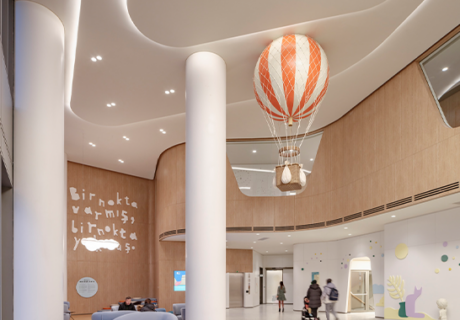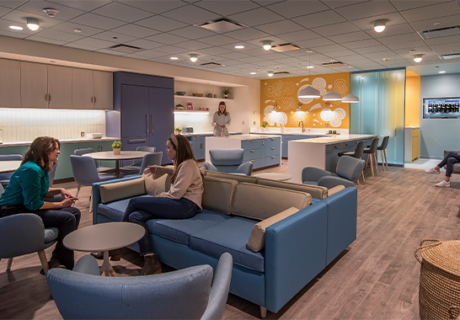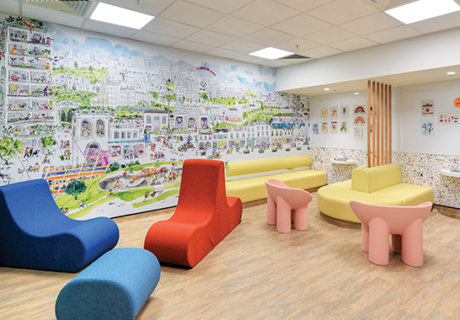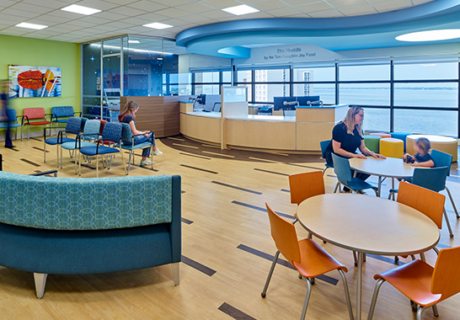Travel Companion For Kids
Before Juliana Children’s Hospital opened in June 2015 as part of the new The Hague Hospital, Dutch firm MVSA Architects (a member of building consortium VolkerWesselsHaga) sought to enrich its architectural and interior design with a “finishing touch” that would create a positive distraction for young patients and their families.
Turning to Tinker Imagineers (Utrecht, The Netherlands), the experience design firm created an interactive journey for visitors to take inside the hospital, using projections, hands-on objects, and 43,055 square feet of graphic wallcoverings.
The storyline centers on five friends—Hug, Happy, Fold, C-bot, and Vizzle—who live in a world of sea, sun, and sand within Juliana Children’s. Each character is designed with its own personality to help kids find one to identify with, such as C-bot, who’s curious about medical devices, or Hug, who’s soft and sweet like a teddy bear.
These characters appear throughout the hospital so patients can find them during their stay—from the atrium and waiting areas to the corridors and treatment rooms.
“It lets the children forget that they are actually in a hospital,” says Stan Boshouwers, partner and founder of Tinker Imagineers. “Interactivity is an important tool to create an immersive and playful environment where children become part of the story. That’s important because children and, more importantly, their parents experience a lot of stress during their visit.”
The animated projections are created using three layers: a static wall graphic; a dynamic screensaver with graphic elements that light up, such as the string of a kite or the blades of a helicopter; and the interactive animations.
For example, in the OR corridor, a patient’s movement down the hallway activates animated projections at three points where they can watch the characters move, form different shapes, or fly away. “It stimulates their own imagination and lets them forget they’re on their way to surgery,” Boshouwers says. The story then continues in the recovery room where the characters show up via an iPad app to check in on the patient.
Additionally, clinicians can use the animations to distract, stimulate play, or provide information during treatment sessions, such as in the lung function room, where patients can watch Happy blowing bubbles in the background, just like they have to do.
In the public elevators, two portholes are integrated into a wall at different heights with animations that change at each floor, including an underwater scene to mark the ground floor, a beach scene for the first floor, and an aerial view for the second floor.
Other playful elements are incorporated into the hospital, including a play ship in the atrium and an airship on the top floor, in front of the hospital’s Ronald McDonald House, where children can climb into the cockpit and pretend to fly.
Anne DiNardo is senior editor of Healthcare Design. She can be reached at anne.dinardo@emeraldexpo.com.




